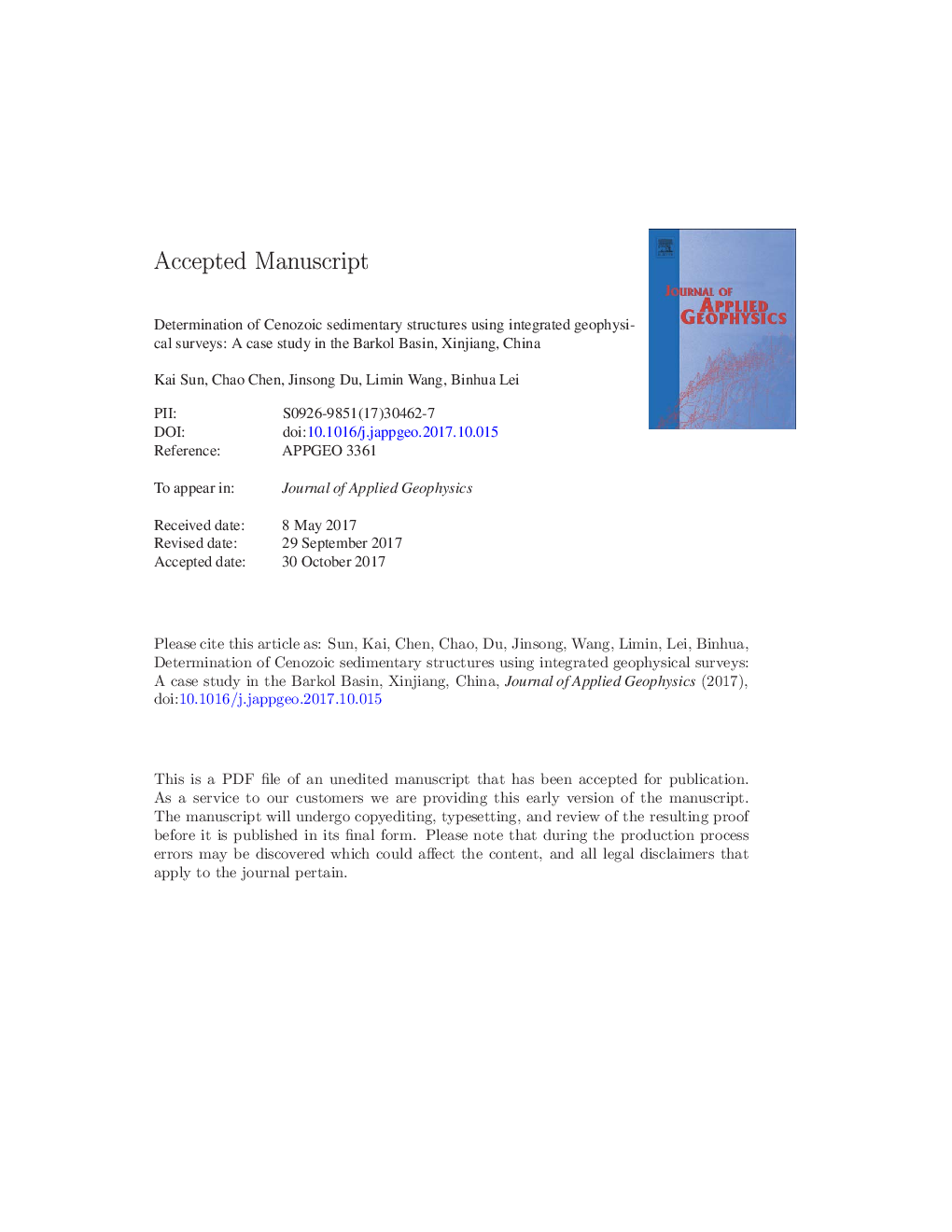| Article ID | Journal | Published Year | Pages | File Type |
|---|---|---|---|---|
| 8915550 | Journal of Applied Geophysics | 2018 | 44 Pages |
Abstract
Thickness estimation of sedimentary basin is a complex geological problem, especially in an orogenic environment. Intense and multiple tectonic movements and climate changes result in inhomogeneity of sedimentary layers and basement configurations, which making sedimentary structure modelling difficult. In this study, integrated geophysical methods, including gravity, magnetotelluric (MT) sounding and electrical resistivity tomography (ERT), were used to estimate basement relief to understand the geological structure and evolution of the eastern Barkol Basin in China. This basin formed with the uplift of the eastern Tianshan during the Cenozoic. Gravity anomaly map revealed the framework of the entire area, and ERT as well as MT sections reflected the geoelectric features of the Cenozoic two-layer distribution. Therefore, gravity data, constrained by MT, ERT and boreholes, were utilized to estimate the spatial distribution of the Quaternary layer. The gravity effect of the Quaternary layer related to the Tertiary layer was later subtracted to obtain the residual anomaly for inversion. For the Tertiary layer, the study area was divided into several parts because of lateral difference of density contrasts. Gravity data were interpreted to determine the density contrast constrained by the MT results. The basement relief can be verified by geological investigation, including the uplift process and regional tectonic setting. The agreement between geophysical survey and prior information from geology emphasizes the importance of integrated geophysical survey as a complementary means of geological studies in this region.
Related Topics
Physical Sciences and Engineering
Earth and Planetary Sciences
Geophysics
Authors
Kai Sun, Chao Chen, Jinsong Du, Limin Wang, Binhua Lei,
